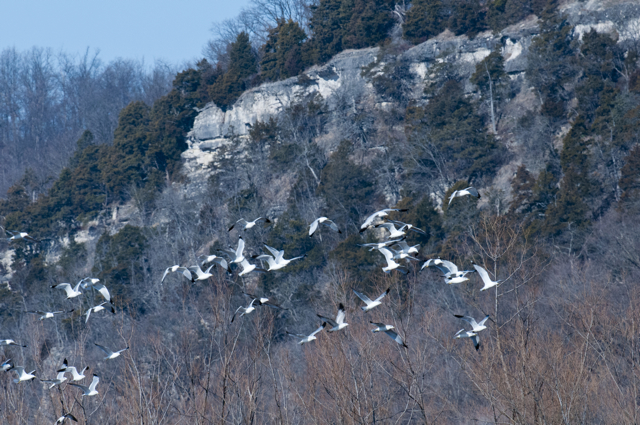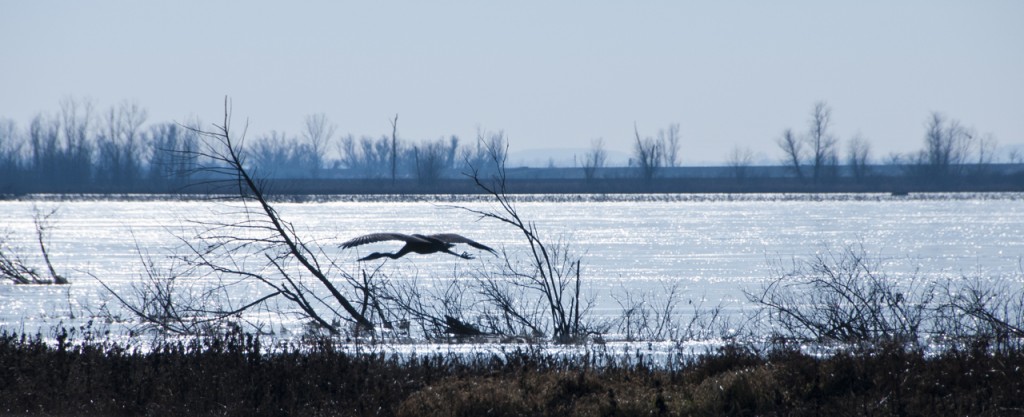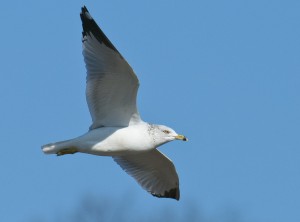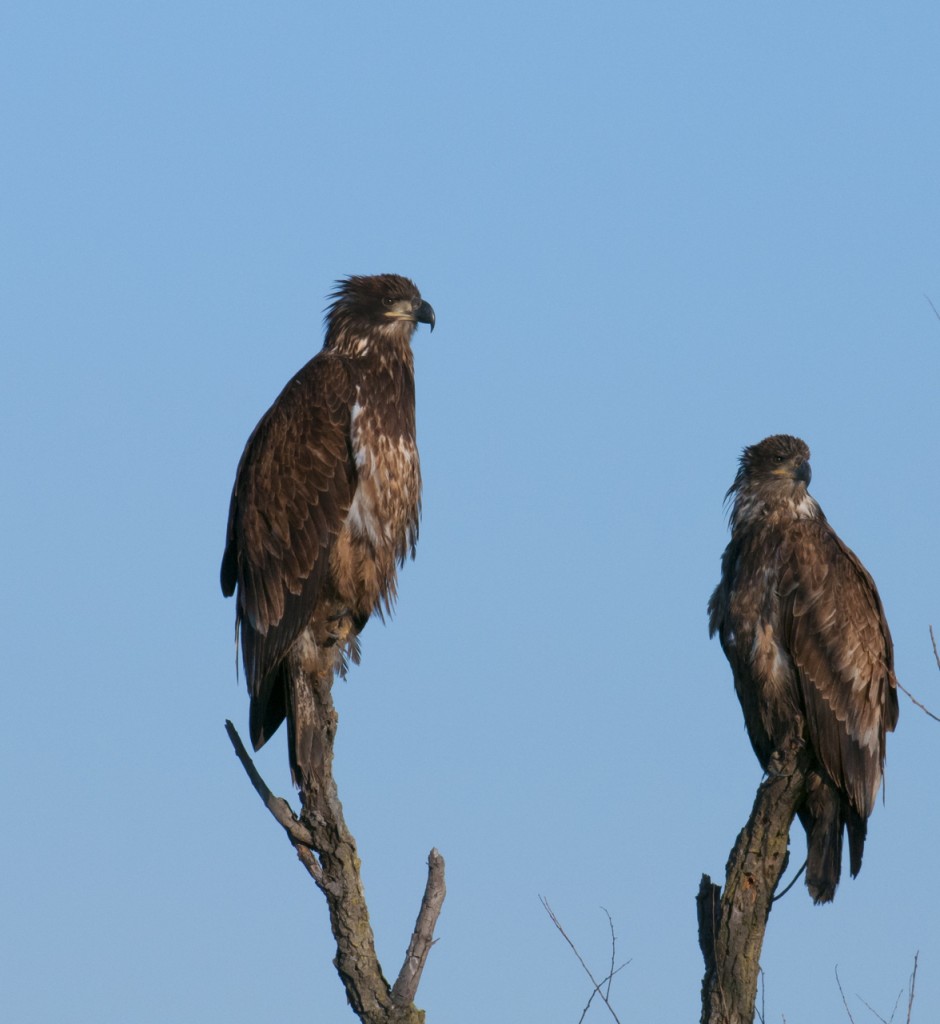Cape Monroe ~~ A Great Place for Wildlife Viewing

Gulls flock at the bluffs of Fults Hill Prairie Nature Preserve. Tom Rollins, Thomas Rollins Photography.
Cape Monroe (County), on the southwest coast of Illinois, is a renowned haven for wildlife. The reasons are simple: location and habitats. A bird’s-eye-view of the landscape helps to explain our county’s attraction for wildlife.
The Mississippi River flyway, and associated riparian wildlife corridor, is the longest migration route in the Western Hemisphere, running from the Gulf of Mexico to the Canadian Arctic. Twice each year, 3½ billion birds, representing almost 300 species, use the flyway to move between breeding and wintering grounds.
Monroe County’s cape-like jut to the west, and the river’s long, circuitous route around the cape, bring scores of migratory birds over our wide, often wet, floodplain and wider-still forested bluffs and uplands. And when they get here, they like what they see: superb habitats, offering a wide array of in-route stopover sustenance or a welcome doormat to stay and start a family. But a bird-brained viewpoint doesn’t tell the whole story.
Our bluff lands and bottomlands are inextricably linked, both
physically and ecologically. The imposing, unglaciated uplands have held their ground over geologic time in defining the limits of the floodplain. We call the bottoms a floodplain because it is a plain that floods; and try as the Corps of Engineers and Levee Districts may, as soon as it rains some, the bottoms have wetlands all over again, as spring-fed creeks, emanating from the bluffs, historically continue to send water to the bottoms, even as old man river tries to ship water to the bluffs.
The bluffline’s north-south orientation is also an important factor in linking bluffs and bottoms. Prevailing westerly winds, streaming unobstructed over the floodplain, are orographically forced to rise over the bluffs creating updrafts and cascading vortices of wind deep into the uplands. In fact, the bluffs rich mantel of loess soil deposits came from wind driven, pulverized rock dust from the bottoms during Illinois’ last glacial epoch.
Where bluff meets bottom, literally along Bluff Road, there is an important intersection of differing habitats called an ecotone, which ecologically links wetlands, cliff face, and forest. Wildlife, particularly amphibians and reptiles, breeds in summer in the wetlands and retreat to dens and hibernacula in the bluffs in winter. Similarly, many birds and other wildlife feed at wetlands by day, and take shelter in the bluffs at night. An ecotone offers critters the advantage of distinctively different habitats in close proximity.
Conner Lake, along Bluff Road near the county line and Rocher, Kidd Lake Marsh, along Bluff Road just south of Fults, and Pinkel’s Woods, a couple miles south of Valmeyer on Bluff Road, all are excellent examples of ecotones and the interface of wetland and upland habitats.
Taken together, our county’s expansive and diverse habitats support an amazing panoply of wildlife, one of the richest listings of resident and migratory species in the state. Our corridor sustains 1,000 plant species, of which five hill prairie species are found nowhere else in Illinois. Three hundred species of birds can be found in the corridor.
Sixty-three species of reptiles and amphibians live here, including four species occurring only in our county and no other place in the state. And 45 species of mammals call the corridor home, including a flourishing population of bobcats.
And, though unknown by most local folks, our bluffland-bottomland corridor enjoys a regional, bi-state reputation for being a rare bird hotspot, with many unusual, vagrant species dropping in for a visit. In the last few years our corridor has hosted black-bellied whistling ducks, a mottled duck, wood storks, a brown pelican, tricolored herons, a swallow-tailed kite, a Swainson’s hawk, whooping cranes, a burrowing owl, and, most recently, a snowy owl, which is hanging around the eastern fringes of the corridor, near Red Bud.
Even this drab, dead-winter February is festooned with active and interesting wildlife in the corridor. Bald eagles are congregating again this winter, with the largest convocation, near Harrisonville, numbering 150 birds or so. The eagles aren’t long-distance migrants, however, as they all grew up within 20 or so miles of here, just up or down the river.
In winter, the eagles gather to re-establish social hierarchies, and the five and six year olds select life-long mates. The Harrisonville conclave, smack dab in the middle of the floodplain, is a perfect location. Nearby wetlands and the river provide ample food, but proximity to the bluffs is the key factor.
Eagles court by performing dramatic aerial acrobatics, including steep headfirst dives, with courting pairs locking talons in their descent and sky-tumbling together one over the other. Not surprising, the eagles conduct their courtship flights over the bluffline, taking full advantage of the persistent updrafts and eddies.
Ring-billed, herring and Bonaparte’s gulls have again moved into our area for winter, drifting south along the flyway when frigid temperatures overtook their colonial breeding and hunting grounds around the Great Lakes. Foregoing their typical fish diets, the gulls are perfectly willing to sample mollusks and grubs from prepared farm fields, leaving behind only gull poop in payment for their meals and visit.
This month’s ring-billed gull concentration at Kidd Lake has been historic. With the warm winter and open water, nearly 1,000 gulls have been observed, riding the updrafts before the cliff face and squawking their pleasure like a day at the beach.
If you are a wildlife lover, everyday offers a discovery on the southwest coast of Illinois in Monroe County — where our mountains meet our sea.
Clifftop, a local nonprofit organization, is focused on preserving and protecting area bluff lands.
A version of this article appeared in the February 17 2012 edition of the Monroe County Independent.
© 2012 all content rights reserved, Clifftop NFP.
Comments are currently closed.



